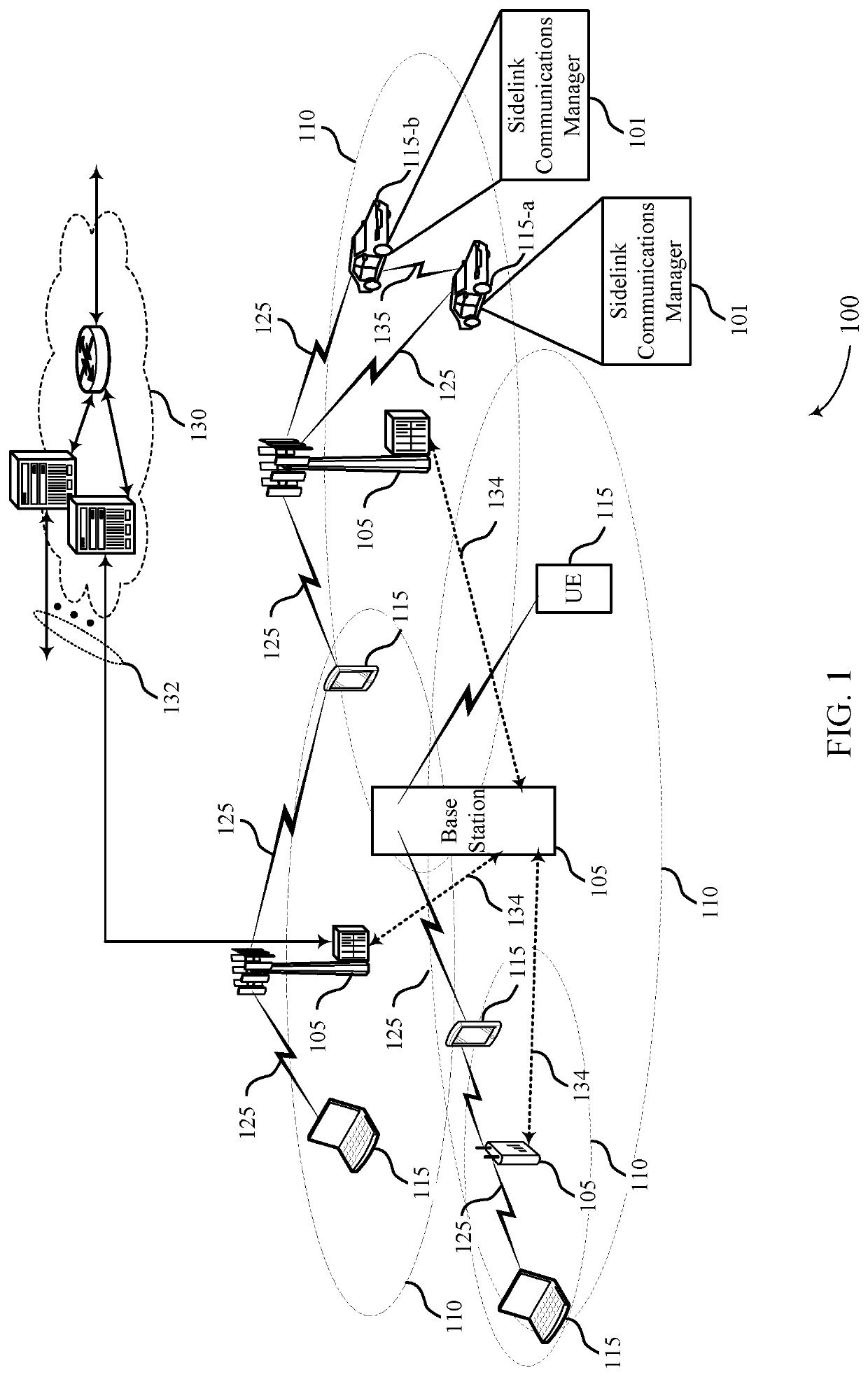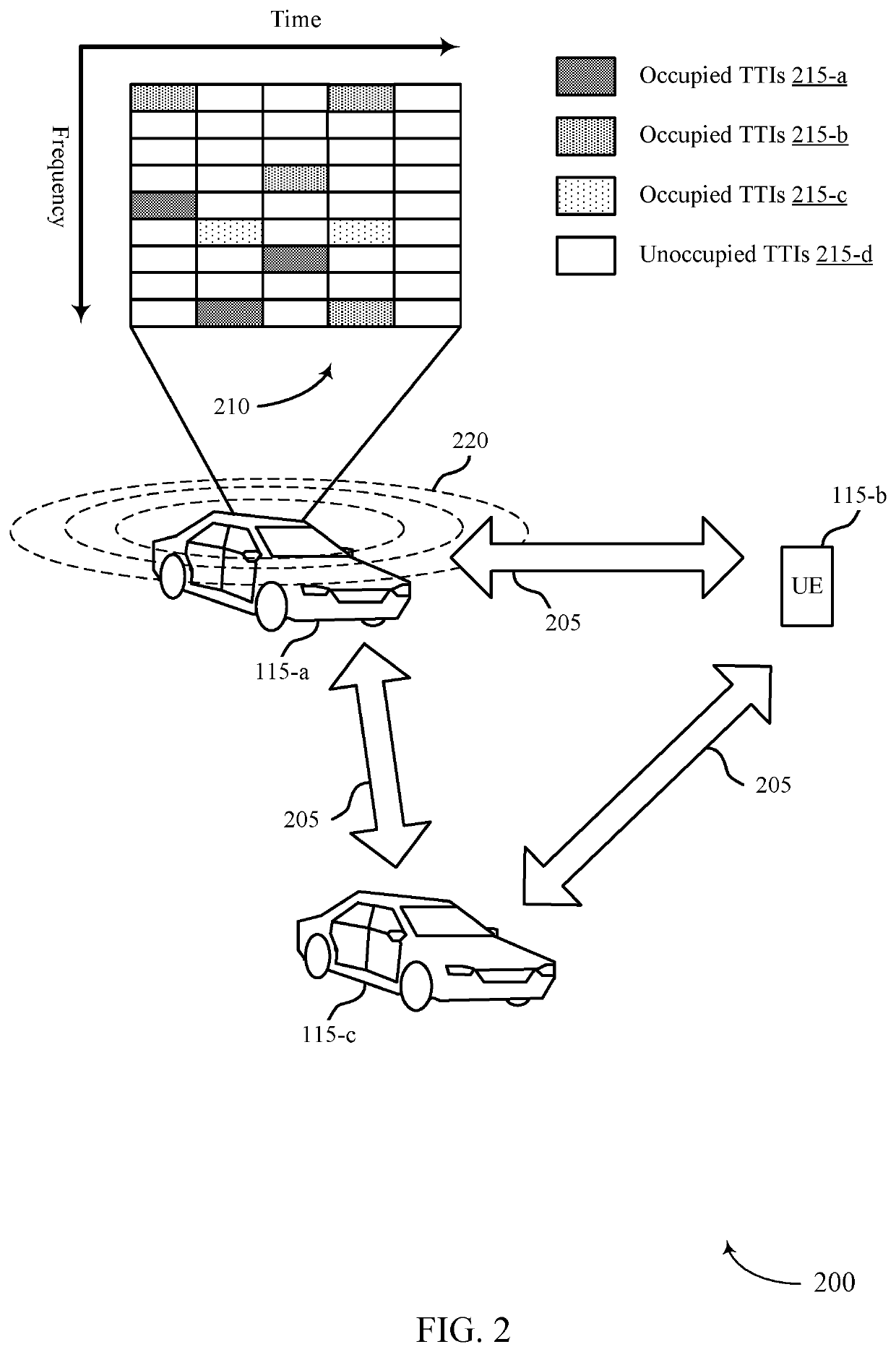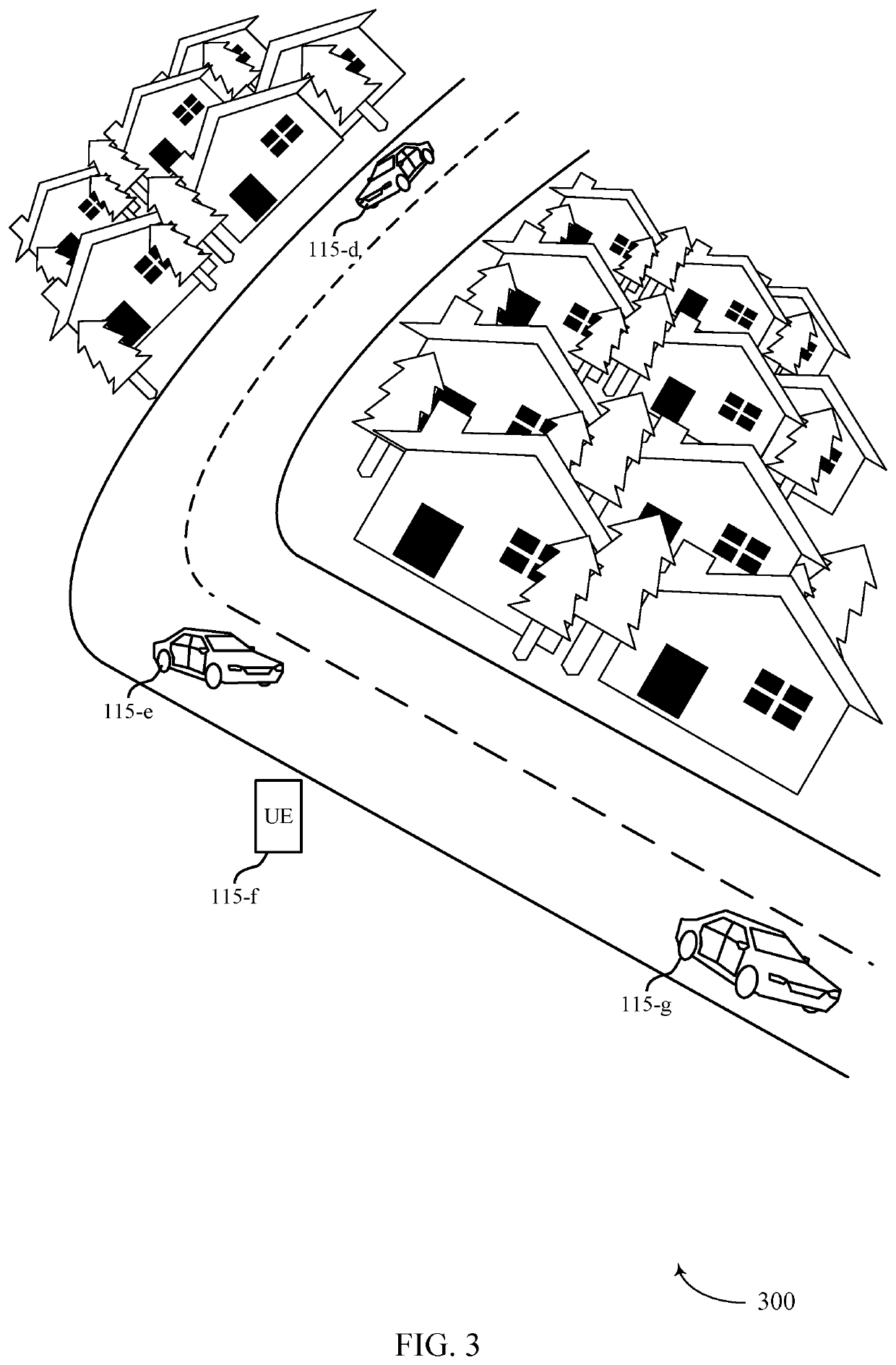Control forwarding techniques for wireless communications
a wireless communication and forwarding technology, applied in the field of wireless communication, can solve problems such as inability interference or other problems with resources utilized by multiple ues, and failure to transmit and receive signals
- Summary
- Abstract
- Description
- Claims
- Application Information
AI Technical Summary
Benefits of technology
Problems solved by technology
Method used
Image
Examples
example 1
[0190]A method for wireless communications, comprising: selecting, by a first wireless device, a first transmission resource for transmission by the first wireless device and to be included in a first set of resource reservation information to be transmitted during a transmission interval; determining one or more second transmission resources that are reserved by one or more second wireless devices via respective second sets of resource reservation information; and transmitting a signal during the transmission interval, wherein the signal includes the first set of resource reservation information during the first set of resources and at least one of the second sets of resource reservation information during additional resources of the transmission interval.
example 2
[0191]The method of example 1, further comprising: determining a priority associated with reservation of the one or more second transmission resources by the one or more second wireless devices, wherein the at least one of the second sets of resource reservation information is identified based at least in part on relative priorities.
example 3
[0192]The method of any of examples 1 to 2, wherein the priority is based at least in part on a distance between the first wireless device and each of the one or more second wireless devices.
PUM
 Login to View More
Login to View More Abstract
Description
Claims
Application Information
 Login to View More
Login to View More - R&D
- Intellectual Property
- Life Sciences
- Materials
- Tech Scout
- Unparalleled Data Quality
- Higher Quality Content
- 60% Fewer Hallucinations
Browse by: Latest US Patents, China's latest patents, Technical Efficacy Thesaurus, Application Domain, Technology Topic, Popular Technical Reports.
© 2025 PatSnap. All rights reserved.Legal|Privacy policy|Modern Slavery Act Transparency Statement|Sitemap|About US| Contact US: help@patsnap.com



